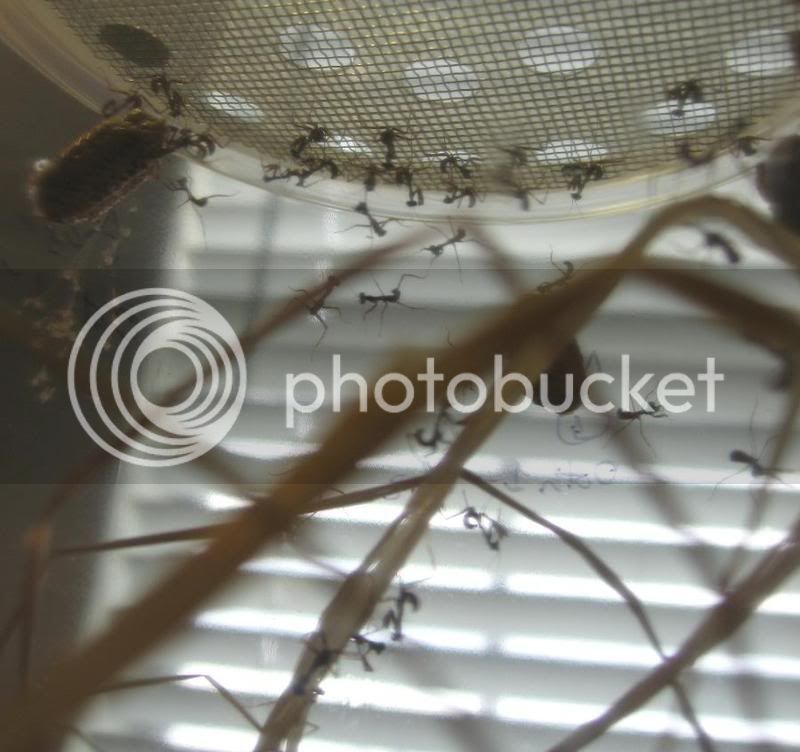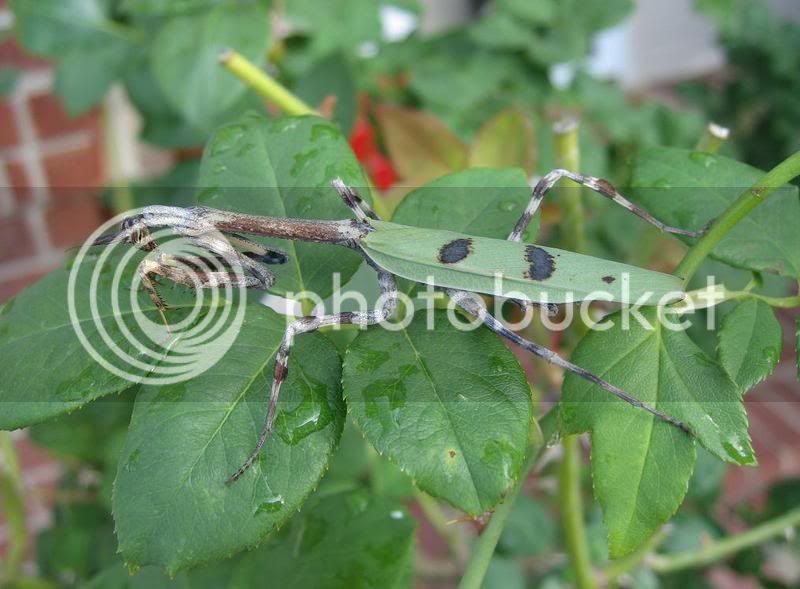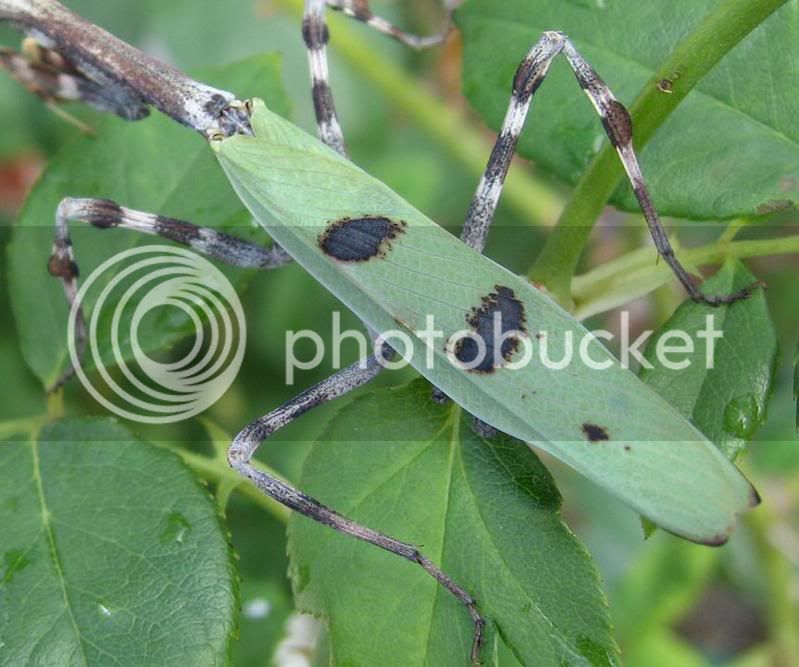They are so neat with their horn and those long necks.
You are using an out of date browser. It may not display this or other websites correctly.
You should upgrade or use an alternative browser.
You should upgrade or use an alternative browser.
Pseudovates arizonae (Arizona Unicorn mantis)
- Thread starter yen_saw
- Start date

Help Support Mantidforum:
This site may earn a commission from merchant affiliate
links, including eBay, Amazon, and others.
Well Orin, how many of those people in the past were Yen? If anyone can rear P. arizonae successfully, it will be Yen!! Yen, I would be happy to try hatching out one of the new ooths when you get a spare.
Well i knew this is not going to be an easy meat, but i will give it a try nevertheless. I have gone too far now to retreat! 
It doesn't take too long for the female to mature, just a day after my first male moulted into adult, the other subadult female decided to get her wings too
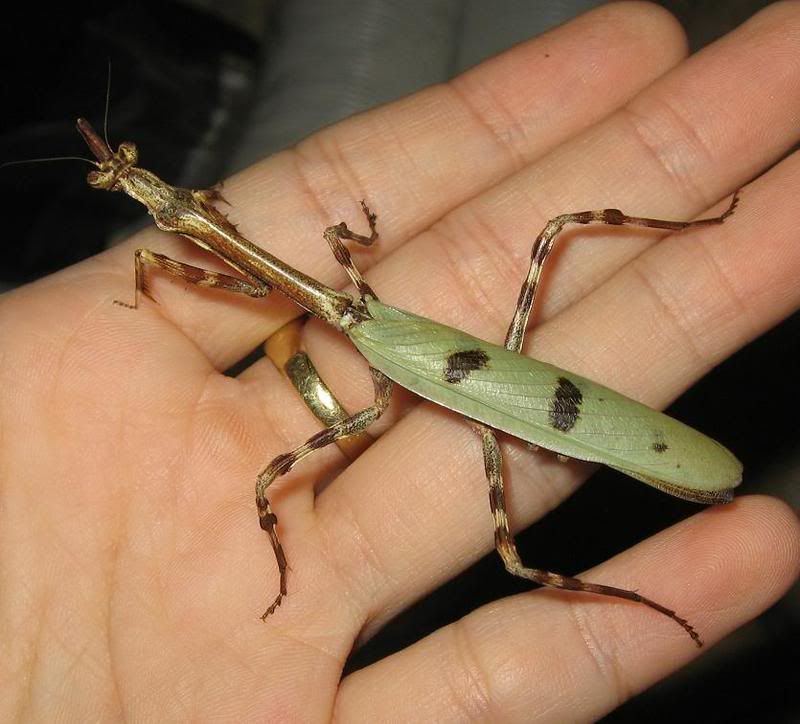
Here is the adult pair
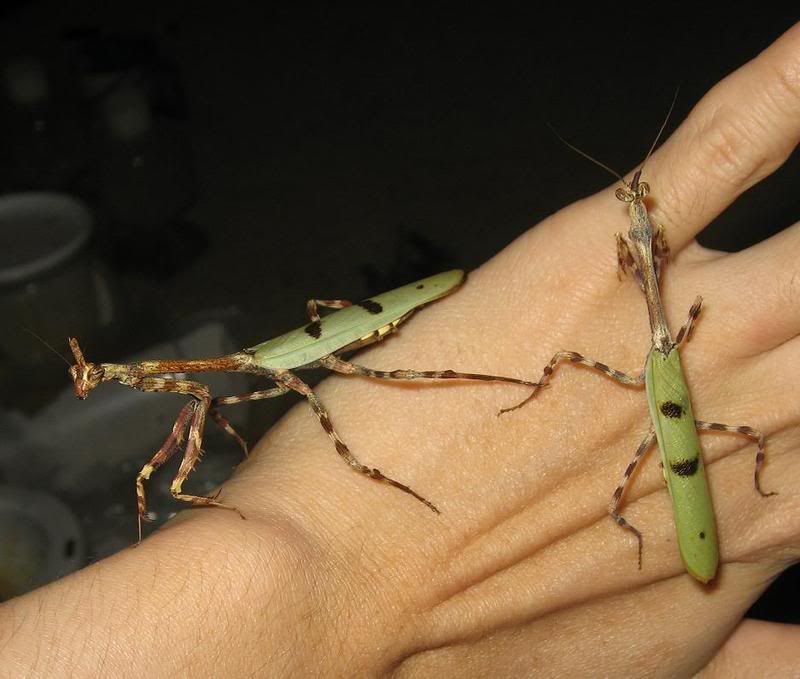
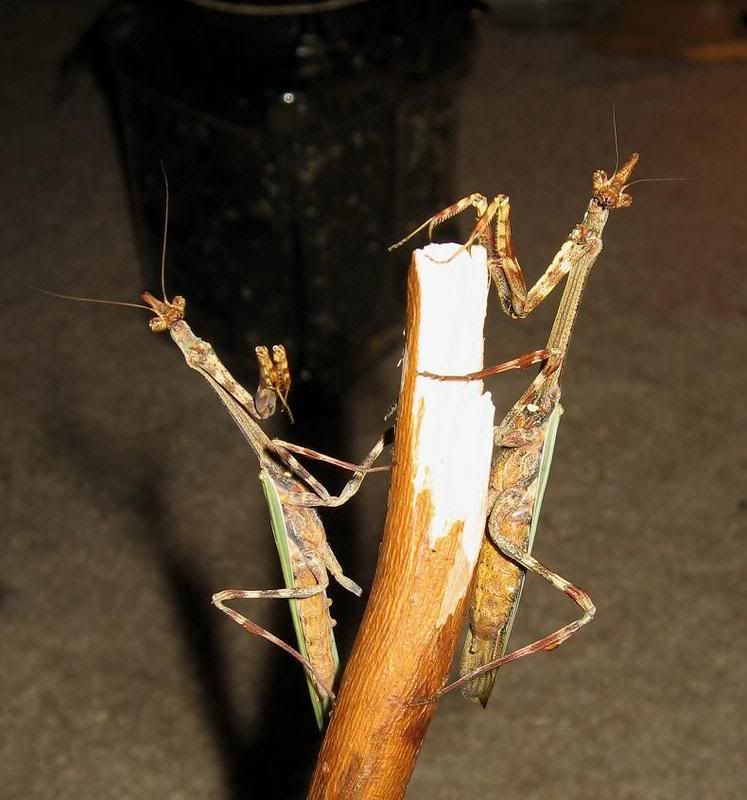
Now it becomes apparent that adult female has different wing pattern compared to the Texas unicorn
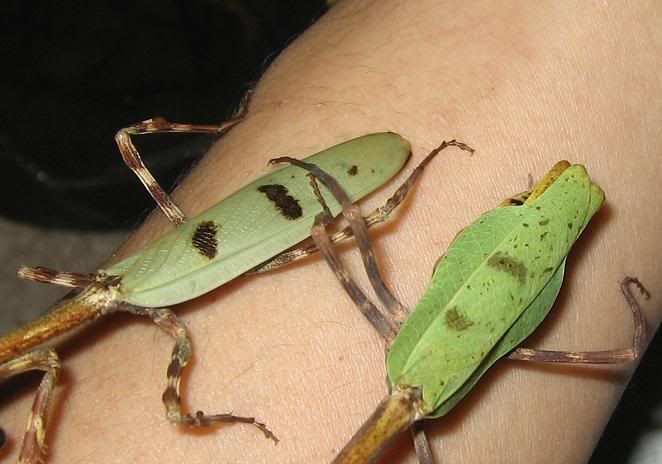
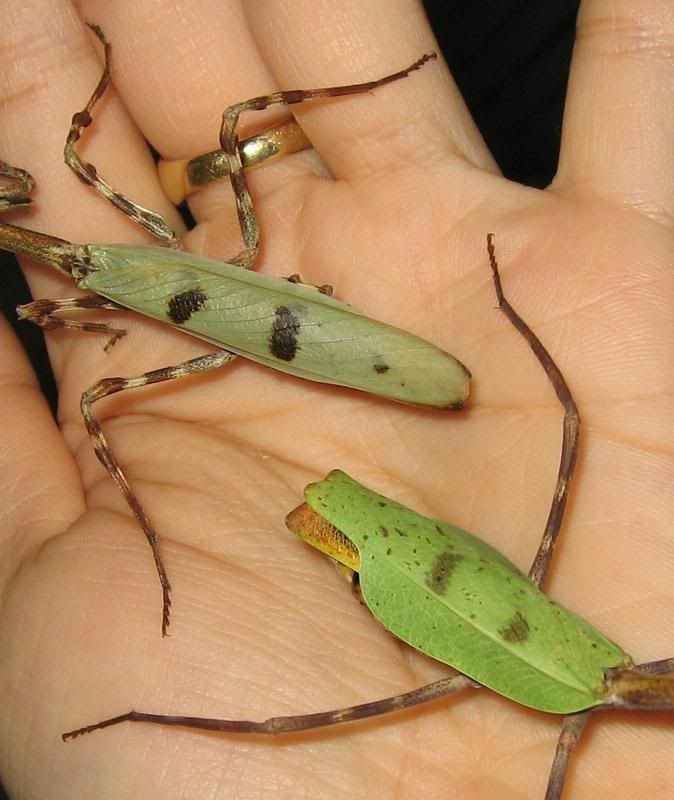
Texas unicorn female in my culture also appear to be larger than the Arizona unicorn mantis (female)
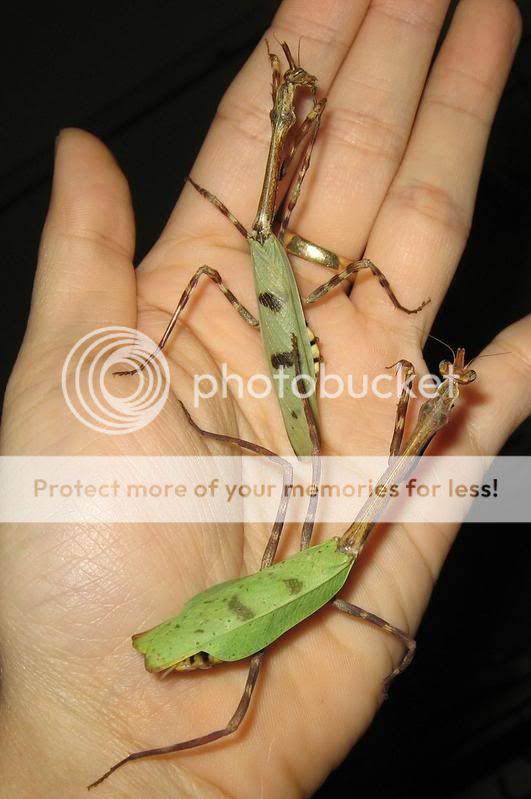
It doesn't take too long for the female to mature, just a day after my first male moulted into adult, the other subadult female decided to get her wings too

Here is the adult pair


Now it becomes apparent that adult female has different wing pattern compared to the Texas unicorn


Texas unicorn female in my culture also appear to be larger than the Arizona unicorn mantis (female)

They look so much alike, I just mated the final of my texas tonight, it was too easy! How are these to mate Yen, let us know.
Congrate on your Texas unicorn Becky  will keep update here on how this species fare on breeding. The pair just moulted few days ago into adult, too shy to mate
will keep update here on how this species fare on breeding. The pair just moulted few days ago into adult, too shy to mate 
Reread the post, I didn't say Yen couldn't do it.Well Orin, how many of those people in the past were Yen? If anyone can rear P. arizonae successfully, it will be Yen!! Yen, I would be happy to try hatching out one of the new ooths when you get a spare.

$20.99 ($20.99 / Count)
Jumping Spider Enclosure (4.7"x3.9"x7.8"), Spider Terrarium, Praying Mantis Habitat, Suitable for Small Arboreal Reptiles, Mantises, Spiders, and Other Invertebrates
Jiara Electronics

$13.53
Butterfly Breeding Net, Folding Butterfly Habitat Cage White Butterfly Mesh Cage for Kid Garden Science Education Tool 40x40x60cm
enshishiqiannanwangluoyouxiangongsi

$13.99 ($223.84 / lb)
Surmen Legacy Freshly Started Wingless Drosophila Melanogaster Fruit Fly Culture
Surmen Legacy

$13.19 ($13.19 / Count)
Butterfly Breeding Net Folding Butterfly Habitat Cage White Butterfly Mesh Cage for Kid Garden Science Education Tool 40x40x60cm Butterfly Cage
Hubeichunliangnongyefazhanyouxiangongsi

$18.99 ($2.12 / Ounce)
Josh's Frogs Producing Wingless Drosophila Melanogaster Fruit Fly Culture
Josh's Frogs

$34.99
$39.99
RESTCLOUD 30" Large Monarch Butterfly Habitat Cage, Outdoor Insect Mesh Cage Terrarium 16.5" x 16.5" x 30"
Restcloud

$39.95 ($1.25 / Ounce)
Creation Cultivated 32oz Fruit Fly Culture - Live Feeder Insects for Praying Mantis, Jumping Spiders, Geckos, Lizards, Dart Frogs (Drosophila Hydei Flightless)
Creation Cultivated

$13.99 ($0.44 / Ounce)
Fresh Fruit Fly Culture (Drosophila Hydei) - Praying Mantis Mantid Frog Lizard Food - 32oz Cup
Surmen Legacy

$3.19 ($42.53 / lb)
$6.09 ($81.20 / lb)
Fluker's Gourmet Canned Food for Reptiles, Fish, Birds and Small Animals, Black, Mealworms 1.23 Ounce (Pack of 1)
Amazon.com
Please, i just want to share the update with this species, i appreciate the warning from Orin and your kind word Mike. Lets hope luck is on my side for the second time on this native unicorn species.
Last edited by a moderator:
Love the photos and updates Yen, just adding a little information. Also, maybe understanding the breeding isn't easy like Phyllovates will make your success more likely.Please, i just want to share the update with this species, i appreciate the warning from Orin and your kind word Mike. Lets hope luck is on my side for the second time on this native unicorn species.
It's at least the third time. I sent out a bunch a few years ago and not as many on trades to breeders six or seven years before that.
Thanks Orin. Hopefully with more mantis hobbyists in this country, this beautiful native species can continue for generations.
Andrew
Well-known member
Was it the breeding itself or hatching of the ootheca(be it infertile, or whatever) that made this species difficult?
Last edited by a moderator:
By elusive i meant they are rarely found in the wild.Just what is so elusive about this species?
i am trying to find out myself. But if my memory didn't fail me it is the ooth infertility that was the concern. Is that right Orin?Was it the breeding itself or hatching of the ootheca(be it infertile, or whatever) that made this species difficult?
They're really easy to rear up to adulthood with nearly 100% survival and minimal care. The problem is just timing, mating and egg laying. Your 'power feeding' should take care of the first one or two but maybe not the third.By elusive i meant they are rarely found in the wild.i am trying to find out myself. But if my memory didn't fail me it is the ooth infertility that was the concern. Is that right Orin?
They are difficult to kill that's true! I have about only a dozen left after the ooth hatched during shipment but those that survived been doing very well. In fact, don't think any die yet and i have roughly a dozen of them left still. Current count are 2 adult females and 1 adult male, the rest are mainly at subadult stage. So timing should be alright. My concern right now is that i have female bias group, just hope the adult male knows what to do and females know when to lay ooth  They seems to like very hot weather that's for sure.
They seems to like very hot weather that's for sure.
Too many mantis, and too little time to update here 
Another milestone reached. THey are easy to breed as male doesn't hesitate at all.
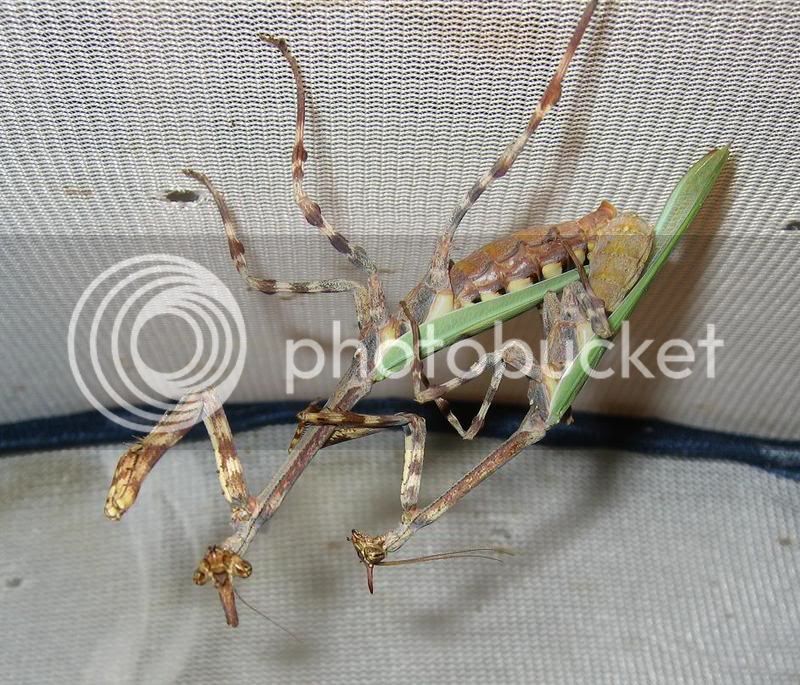
Now i need another two huge steps to "complete" this species, i.e. for female to lay an ooth and that the ooth is viable and hatch. Can't wait.
Another milestone reached. THey are easy to breed as male doesn't hesitate at all.

Now i need another two huge steps to "complete" this species, i.e. for female to lay an ooth and that the ooth is viable and hatch. Can't wait.
Now just one step away to "complete" the breeding cycle for this species. Ooth has arrived 
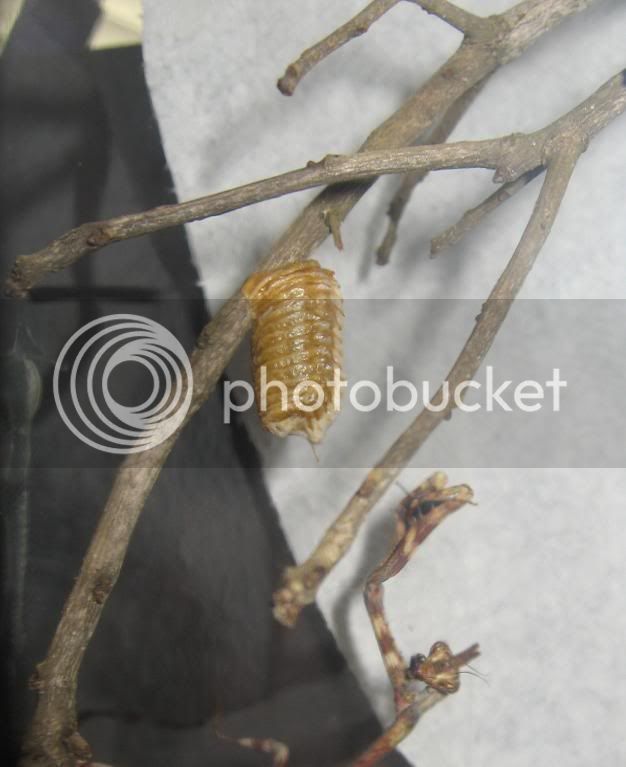
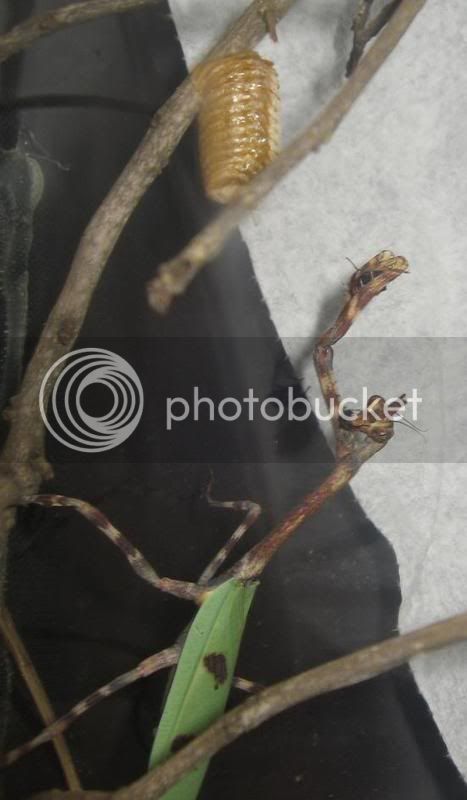


:blink: The same mantis produce another smaller ooth in less than a week?? My guess is this species can produce dozen of ooth just like the Texas unicorn.
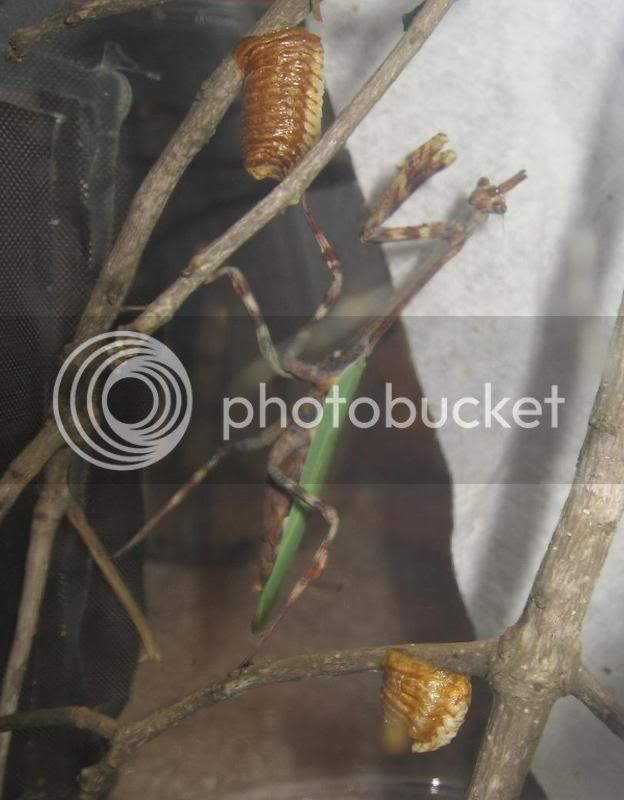
My second female produced an incomplete ooth..bummer I wonder if her next ooth be normal :huh: BUt my guess is that she wasn't kept in a warm spot, the first one was right under the heat lamp and her first ooth is HUGE.
I wonder if her next ooth be normal :huh: BUt my guess is that she wasn't kept in a warm spot, the first one was right under the heat lamp and her first ooth is HUGE.
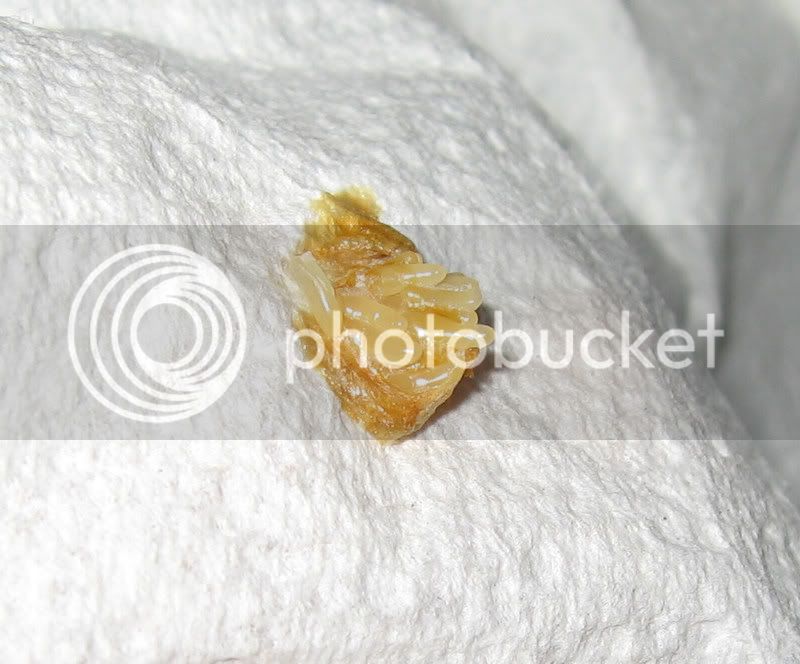
The third female produced a normal ooth today..yay
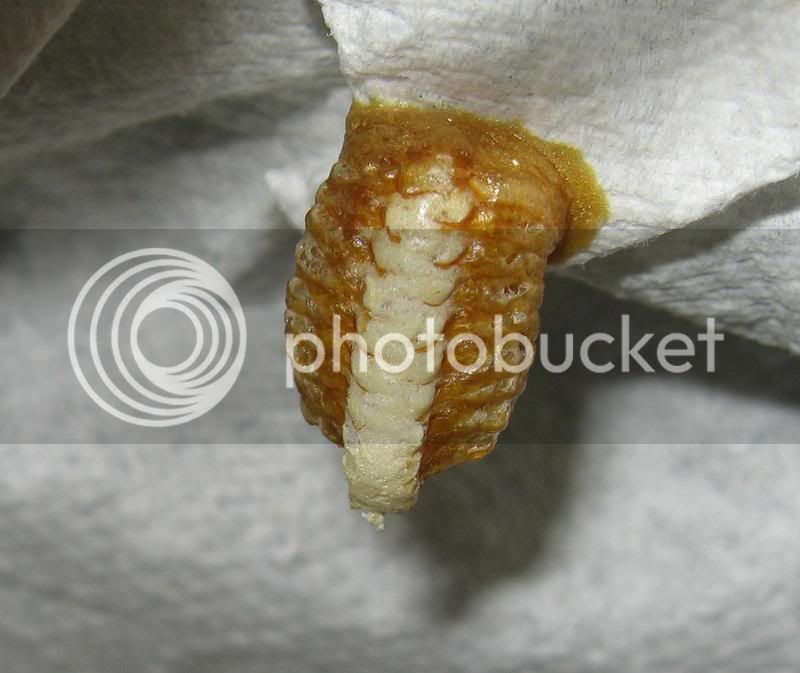

My second female produced an incomplete ooth..bummer

The third female produced a normal ooth today..yay

Last edited by a moderator:
More update.... more females being mated and ooth being layed by different females, so far ootheca laying hasn't been an issue. Boy i better prepare more fruit fly culture cos if they all hatched i would be scrambling for one for sure.
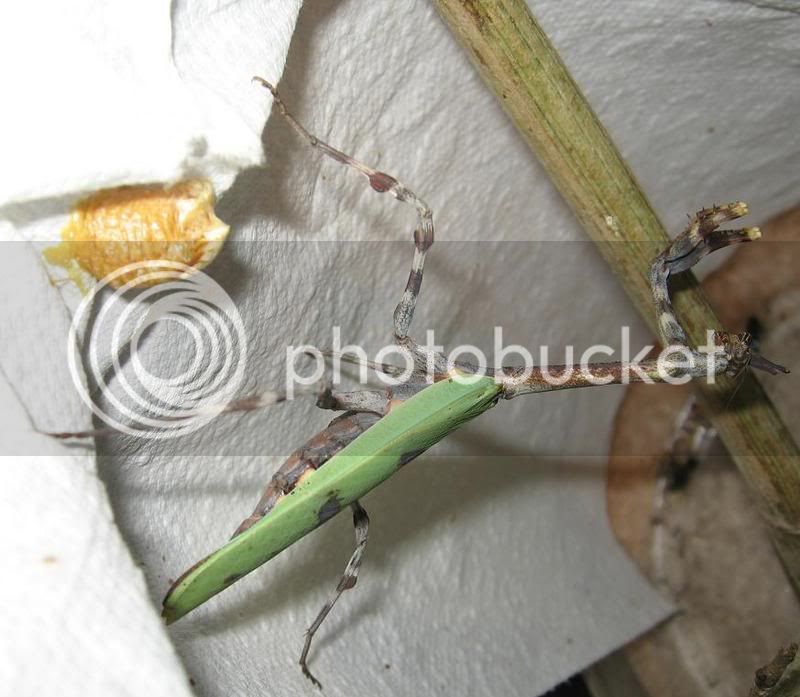
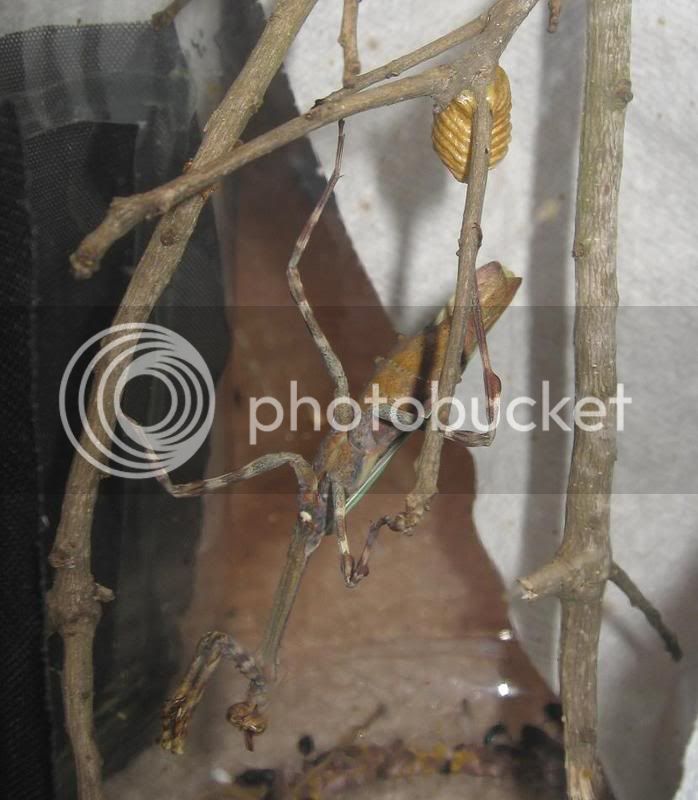


YES!! here comes the first generation of Arizona unicorn mantis (Pseudovates arizonae), the very first ooth layed on 4th of Jan hatched out about 45 nymphs. For some reason i was expecting a larger hatch out rate due to the larger ooth size. Hopefully there are still more hatchling coming out from the same ooth but i am sure many more oothecae to hatch a lot more nymphs in near future.
